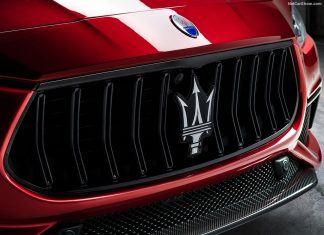French Auto Market in 2025 continues to stagnate. Sales up to October fell 5.4%, with Mercedes dropping 14.2% into 8th and Skoda rising 15.2% to take its spot. EVs suffered from the contraction, reporting growth of just 1%.
Economic Environment
In 2025, France’s economy is projected to grow by 0.7%, supported by stronger-than-expected performance in the first half of the year but tempered by fiscal and political uncertainty. Growth should rise moderately to 0.9% in 2026 and 1.1% in 2027, driven by recovering household consumption and private investment, while trade’s contribution remains neutral. The fiscal deficit is expected to stay at 5.4% of GDP in 2025, with gradual structural adjustment thereafter. Inflation is set to fall sharply to 1.0% in 2025 from 2.3% in 2024, then rise to 1.3% in 2026 and 1.8% in 2027, approaching the ECB’s 2% target.
Core inflation (excluding energy and food) should stabilize near 1.6–1.7%, reflecting moderating services prices. Wages are expected to outpace prices, increasing purchasing power by about 1% annually, supporting consumption recovery. The unemployment rate should hover around 7.5%–7.6%, easing slightly to 7.4% by 2027. Fiscal and trade policy uncertainty remains the main downside risk, while stronger wage dynamics and stabilizing energy prices underpin gradual medium-term growth.
Automotive Industry Trend and Outlook
The weak economic outlook slowed down the automotive industry, extending last year’s decline. YTD figures up to October 2025 dropped 5.4% in year-on-year volume, reaching 1,32 million units.
Brand-wise, Renault was the best seller with 17.4% of the market (+2.6%) followed by Peugeot in 2nd with 14.3% (-4%) and Dacia in 3rd with 9% (+0.5%).
In 4th place ranked Citroen -up 2 spots- (-0%) ahead of Toyota -down 1 spot- in 5th (-13.9%), Volkswagen -down 1 spot- in 6th (-8%) and BMW in 7th (-10.7%).
Skoda climbed 6 spots into 8th (+15.2%) followed by Audi in 9th (-2.7%) and by Hyundai -up 2 spots- in 10th (-3.7%).
Looking at the best selling model, widely reported in the dedicated post, the leader was still the Renault Clio (+11.4%) ahead of the Dacia Sandero (-13.9%) and the Citroen C3 (+17.1%).
EV Market Trend and Outlook
EV tally is affected by the broader stagnation 2025, with YTD figures up to October growing only 1%. Totaling a share of 15% on the total, government’s reduction of subsidies have constrained the sector’s growth, with the amount for the remaining bonuses yet to be confirmed.
Renault retained the largest share of the market at 26.6% while growing 9.4%. Renault followed in 2nd despite stagnating. The brand, however, is investing in battery tech and expanding affordable models, starting with the Renault 5, hinting at a future expansion.
Medium-Term Market Trend
Over the past decade, France’s car market has experienced significant ups and downs. From 2014 to 2018, steady GDP growth drove a 21% increase in sales, peaking at 2.2 million registrations in 2018—the highest point of the decade.
The pandemic in 2020 dealt a severe blow, shutting down dealerships and factories, causing a 19.8% decline to 1.65 million sales, an all-time low. Post-Covid, the market struggled to recover, with sales stagnating at 1.7 million in 2021 and dropping 7.8% in 2022 as European policies pushed EV adoption, making car ownership more expensive for many consumers.
Despite projections of weak demand, 2023 rebounded with a 15.9% surge to 1.77 million, before contracting 3% in 2024. Meanwhile, the EV sector gained momentum, despite a 22% dip in 2018. Heavy government investment and rising competition from Chinese automakers fueled a massive 175.9% increase in EV sales by 2024, solidifying their role in the market’s transformation
Tables with sales figures
In the tables below we report sales for all Brands, top 10 Manufacturers Group and top 10 Models.











